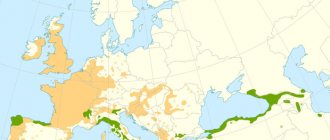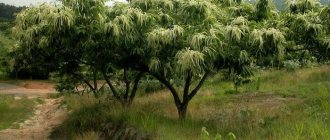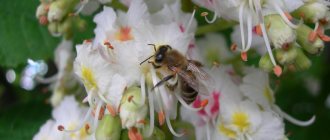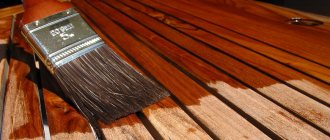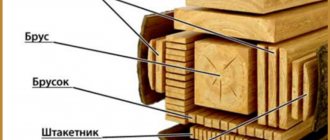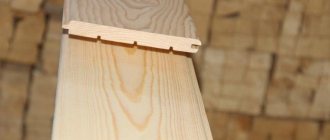Forest chestnut - photo Edible chestnut is a beautiful tree of the beech family. Sometimes it is called noble chestnut, real or seed. Of interest to humans are its fruits - small nuts weighing about 20 grams. As they mature, the shell in which they grew opens up. Chestnuts fall to the ground, where they are picked up by people or wild animals.
Delicious dishes are prepared from them, stored for future use, and used as a snack. Collecting forest gifts is a centuries-old tradition. Even today, when there is a huge selection of food in stores, many people specifically go to the mountains to collect forest harvests. This is a natural, environmentally friendly product. It will only bring benefits, unless, of course, you overeat.
Edible and inedible chestnut - how to distinguish, photo
When I wrote this article, I was surprised to find that there was a lot of confusion. A huge number of authors in their publications cite photographs of horse chestnut, talking about cooking methods, which goes against reality.
This is a horse chestnut, it is not eaten
I would like to dot the i’s: the chestnuts that city dwellers see under their feet are not suitable for food and have nothing to do with their edible counterparts.
Horse chestnut grows in the city, blooms in the spring and probably has some healing properties, but the subject of our conversation today will be a completely different plant.
Horse chestnut and chestnut grow in different climatic zones and do not overlap anywhere, but their fruits have something in common in appearance. They are round, brown in color, with a dense peel, but the edible ones are smaller. They have a point on one side and a dark spot on the other. Inedible ones have a light spot on the side. Well, the main difference is the taste.
I haven’t tried horse chestnut, but I suspect that it is terribly bitter, but the edible miracle is so good. It is softer than a walnut, but harder than a potato. The taste is sweetish, the consistency is loose, starchy, if cooked correctly. Otherwise, the kernel will resemble a young hazelnut, which is also not bad.
Edible chestnut (left) and inedible (right) - find the differences
Inedible species
City squares and park alleys are often decorated with horse chestnut, also called aesculus or acorn. These nuts are strictly forbidden to eat. Common varieties of such trees:
- Indian. Homeland - Northern India. The deciduous tree grows 20 meters high. Large inflorescences of white flowers are formed, strewn with yellow and red spots. The fruits are prickly and quite fleshy.
- Californian. It is a relatively low tree, reaching a height of no more than 10 meters. Twenty-centimeter inflorescences of snow-white-pink flowers exude a very delicate, pleasant scent.
- Japanese. The inflorescences are white and pink, and the fruits are pear-shaped.
- Yellow. Grows 30 meters. This is the most cold-resistant species and has the peculiarity of flowering later than other chestnuts. It has a thick luxurious pyramidal crown. The leaves are jagged, clearly wedge-shaped below and yellow in color.
- Small-flowered. It is a dense thicket of bushes with a height of only 5 meters. It has white flowers with pinkish stamens.
- Naked. It can be 25 meters high. Has a decorative crown.
- Pavia. It can be an ornamental shrub with a small height of about 6 meters. Or 12-meter trees with thornless fruits. The flowers are a defiantly bright scarlet hue.
- Meat red. Does not tolerate drought and extreme heat. Round fruits prick weakly. The leaves are expressive, rich green in color. The flowers are dark pink or dark red.
The fruits of horse chestnut should not be eaten under any circumstances; it is only possible to make medicines for medicine. They are poisonous, with a bitter, heavy aftertaste. It contains no protein at all and the nutritional value is extremely low.
Edible chestnut: where does it grow in Russia and what does it look like?
In our country, the plant lives only in the Krasnodar region and the Caucasus. It loves a mild climate and grows no lower than 300 m above sea level (and no higher than 1000 m).
There is an opinion that the first seedlings were brought here by the ancient Greeks, but this is hard to believe. Forests are thousands of years old. They grow in hard-to-reach places far from the sea, where archaeologists have not found traces of ancient colonists.
The trees reach 50 meters in height. Their fruits are glossy, dark brown, slightly flattened, since several pieces ripen in one shell. This occurs in October, and collection continues until frost.
Edible chestnut: where it grows in the Krasnodar region
In our region there is such entertainment, somewhat reminiscent of mushroom hunting or wild garlic picking - an autumn trip to the forest to pick chestnuts. They say that you can collect two bags from one tree if you are lucky. I have never been able to do this.
The closest and most accessible population massif to Krasnodar is located in the region of Tuapse. Small groves planted by forest departments back in Soviet times can be found in the Goryachy Klyuch area. Another fertile region is the environs of Maykop and mountainous Adygea.
Trees do not like lowlands and wet soils. Look for them on well-lit southern slopes, hills, along river banks and in gorges. They are often adjacent to fir, beech and hornbeam.
Differences between edible fruits and poisonous ones
The peeled edible chestnut looks like a fleshy, yellowish nut. In wild edible fruits, one capsule contains several small nuts, while in cultivated garden fruits there is only one, but a large one.
Chestnuts are fast-growing deciduous trees and shrubs. They grow in height from 2 to 40 meters. They bear fruit towards the end of September. The fruits are shaped like spiny balls. In the summer months they acquire a light green color. When ripe they turn brown. These balls contain seeds with a golden brown smooth and thin shell. They are somewhat larger than hazelnuts. Seeds contain large quantities of starch and protein.
Trees grow for hundreds of years or longer. There are natural monuments in the world that are older than two thousand years. While the inedible horse chestnut can withstand almost any climate, the noble chestnut loves warm and humid living conditions. The horse variety can grow in many parks, but the edible variety still needs to be looked for. It is noteworthy that these trees are representatives of completely different species.
Horse chestnut has its own name “chestnut” because it looks very similar to noble chestnut. And it was nicknamed “horse” due to the similarity of the color of the fruit with the color of the fur of a bay horse, the same brown, smooth and shiny. But this type of chestnut cannot be eaten. In addition, due to the external similarity of nuts, poisoning often occurs.
Here the question arises, what are the differences between fruits of different varieties. To do this, you need to take a close look at the trees themselves. The horse has a more luxurious crown, reminiscent of a pyramid, and he himself is taller. It begins to bloom with white and pink buds, and the leaves are collected in fives. The noble chestnut is covered with dense, glossy leaves that grow separately on the branch. The needles on the fruits of the trees are also different. Edible ones should look like hedgehogs, while horse ones should look sparse. The main difference between the edible chestnut fruit and the horse chestnut is the small point at the end of the seed pod.
Composition, properties
The nutritional value of loose kernels is not inferior to potatoes and cereals. More than half of the mass is starch. They also contain up to 6% vegetable protein, 2-5% fat and almost 15% carbohydrates. In addition, they contain fiber, tannins, beta-carotene, vitamins A, K, C, B1, B2, B5, B6, B9.
The mineral composition is mainly represented by potassium, copper, phosphorus, selenium, manganese, calcium and magnesium. The energy value is 170 kcal per 100 grams of peeled kernels. According to this indicator, the product is inferior to nuts; it is not as fatty as pecans or cashews. The big advantage is the complete absence of gluten.
Benefit
Nuts, after thermal processing, resemble lightly boiled beans in taste. They have a unique composition, nutritional and energy value, but in terms of oil content they lag far behind other known nuts. One hundred grams of ready-made roasted chestnuts contains 182 kcal, boiled chestnuts contain 131 kcal, dietary steamed ones contain only 56 kcal, and fresh ones – 166 kcal.
There are a lot of recipes that are simple and easy to prepare. Chestnuts are quite capable of serving as a snack, becoming the main treat or an independent side dish in served dishes.
If you eat chestnuts regularly, your body will receive the required amount of the most beneficial substances, including fiber and vitamins. But do not forget that a sense of proportion should prevail in everything so that nuts cannot cause harm. There is a limitation: up to 40 grams of product per day is allowed.
Edible chestnut: how to cook?
Ripe fruits are boiled, fried, prepared as side dishes and desserts, eaten raw or ground into flour. In European countries, bread has been baked from it for centuries, and in the Caucasus, a drink reminiscent of coffee is made. In the USA, roasted chestnuts are an invariable attribute of Christmas festivities. In Italy, they are used to make bread and the traditional Castagnaccio pie.
Chestnut seedling - photo of fried fruits
I suggest trying the simplest methods first: frying, boiling, baking. Then you can move on to side dishes and confectionery, although this is unlikely to be necessary. Chestnuts are good on their own and do not require any special treatment.
How to fry chestnuts at home in a frying pan?
This is much easier to do than it seems. Culinary blogs are vying with each other to offer delicious recipes, many of which don’t work at all. It is not surprising that not everyone knows how to roast chestnuts correctly, because they do not appear on Russian shelves so often. This does not require oil unless you are preparing a complex, restaurant-quality dish.
The basic recipe is incredibly simple:
- sort through
- wash,
- dry,
- place on a hot aluminum frying pan,
- to cover with a lid,
- keep on fire for 15 minutes.
Readiness is determined by opening a sample copy and evaluating the contents. It should be doughy and sweet. Avoid burning. To do this, periodically open the lid and stir gently with a spoon. The nuts may bounce and pop open like popcorn. Please use caution.
How to peel chestnuts at home?
Hot, well-roasted nuts are easy to peel; just press or pry the shell with a knife and it will fly off. Before cooking, it is recommended to cut the thick skin crosswise. Try it if you're not too lazy. I usually do without unnecessary movements.
About the features of cooking chestnuts
Chestnut will be a real find for all lovers of gourmet food. The flowering tree is an excellent honey plant. Dark honey from flowers is a real expensive delicacy, but anyone who has tried it at least once will remain a lover of this delicacy forever. Possessing a tart sweetness with a slight bitterness, it is considered a very valuable food product with healing properties.
Nuts are not at all similar to it; their gastronomic properties manifest themselves differently. The nut pulp tastes like something between a baked potato and boiled beans, only sweeter and with a nutty aftertaste.
You can let your imagination run wild, because... Edible chestnut is used to make:
- coffee;
- marzipan and chocolate;
- side dish for meat;
- stuffing baked poultry;
- soup seasonings;
- chestnut paste for sandwiches;
- food seasonings for pasta;
- bakery products.
It is better not to experiment with the presented fruits in preparing dishes yourself. It is recommended to use ready-made recipes, since unusual tastes can manifest themselves differently in a particular dish.
What are the benefits of edible chestnut?
Unfortunately, in the Russian-language segment of the World Wide Web, I found very little data about the properties of this wonderful plant. I had to use foreign sources, and this is what I managed to dig up. Regular inclusion of chestnuts in the diet has a positive effect on health:
- Improves digestion and normalizes intestinal microflora. This conclusion was reached by scientists from the Friedrich II University of Naples. The product has a positive effect on the development of certain strains of lactic acid bacteria, increasing intestinal health and nutrient absorption.
- Increases antioxidant protection . The fruits are rich not only in vitamins, but also in other active compounds. A study was conducted at the Department of Biotechnology at Korea's Chosun University in 2010. The results showed that the flower extract protected against certain types of cancer.
- Normalizes blood pressure and protects the heart . The kernels are a rich source of potassium. Completing the deficiency of this element reduces the risk of stroke by 24%.
- Relieves constipation . Nuts are rich in fiber and will be a tasty addition to the diet of anyone prone to bowel retention.
- Strengthens bones . Just 10 kernels provide half the daily requirement of manganese. Scientists from the Department of Clinical and Molecular Genetics at the UCL Institute of Health Chil discovered that the element plays a key role in bone health and protection against many diseases.
- Improves brain functions . Thiamine, riboflavin, pyridoxine and folic acid are necessary components for the normal functioning of the nervous system. The lack of any of them leads to serious problems.
I didn't even know the product was so useful. It’s good that the season is starting, I’ll be more active in absorbing it and experimenting with new recipes.
Chestnut care
The soil around the chestnut tree needs to be loosened 2-3 times per season. Water as needed. In autumn, the circle around the trunk is mulched to 10-12 cm with fallen leaves, peat or sawdust. And if you want to see a spreading crown of your chestnuts, cut the upper branches of the plant by ¼ of the length in early spring. Chestnuts should be fertilized once a year - in early spring. To do this, in a 15-liter bucket, dilute ammonium nitrate - 20 g, mullein (fresh manure) - 1 kg, 20 g of nitrogen-phosphorus-potassium fertilizer and 15 g of urea.
Use in folk medicine
The medicinal properties of edible chestnut have been used for generations in the Caucasus. All its parts are used: bark, flowers. The juice and decoction of the leaves are famous for their antibacterial, anti-inflammatory and wound-healing effects. In the old days, raw kernels were used to treat malaria, and fried kernels had the ability to stop bleeding.
Like any food, chestnut has contraindications. It is not recommended for use with low blood pressure or individual intolerance. The daily norm is a very controversial point.
Sources advise limiting yourself to a handful a day, and in some regions of Italy this is almost the basis of nutrition. Personally, depending on the mood, I can handle a frying pan that can hold half a kilo. I haven't noticed any negative reaction yet.
Two sides of the same coin
It is important to know that edible chestnuts have both benefits and harms. Therefore, you should never abuse such a delicacy. These fried fruits are somewhat reminiscent of hazelnuts, as well as baked bread or charcoal-cooked potatoes. The composition of glossy nuts includes:
- starch;
- types of fats (up to 6%);
- tannins;
- vitamins of groups B and A;
- carbohydrate bonds, more than 60%;
- microelements.
This complex is a real explosive mixture for athletes. When nutrients enter the body, they release enormous amounts of energy.
The peel of the fruit contains the lion's share of fiber, so some people dry the peel and then add it to food. Tinctures, decoctions and infusions are made from foliage, inflorescences and branches, which are used in the treatment of:
- inflammatory processes;
- cough;
- bleeding;
- diseases of the digestive system (has astringent properties).
Among other things, nuts cause allergies. They are contraindicated for those who have kidney problems. They are recommended for use by those suffering from low blood pressure. Among the list of benefits of edible chestnuts, it should be noted that their inflorescences are the rarest honey plants. The honey obtained from them is highly valued among the inhabitants of the Caucasus.
Dried nuts can be crushed in a blender. This powder is then added to any dough. Along with the exotic taste, you can get a decent supply of fiber for your body.
How to select and save?
Buy from the market or supermarket during the autumn months when the harvest is ripe. Choose large specimens with rich color without spots or other defects. Normal size is 3 cm. The product spoils quickly. It is better to prepare it and eat it within 2 days after purchase. In extreme cases, you can freeze it.
Chestnut is a delicious delicacy, rich in nutritional components. It will satisfy hunger for a long time, bring joy to taste and enrich the diet with biologically active substances. The season is about to begin, seize the moment, please yourself and your loved ones, try something new. What if you like it too?
Recipes with chestnuts
Almost all dishes prepared with the addition of chestnuts turn out very tasty. But having a characteristic taste, these nuts do not require any special culinary delights. After all, ordinary, properly roasted chestnuts are still the most popular dish. However, a few healthy recipes wouldn't hurt.
Chestnuts baked in the oven
A kilogram of raw chestnuts should be soaked for half an hour in cold water. Then cut each nut according to diameter. Place the nuts on a baking sheet and cover with a damp towel. Bake for at least half an hour, depending on the size of the fruit. After that, try every five minutes and remove when ready.
Chestnut puree soup
To prepare, you need a liter of meat or vegetable broth, 0.5 kg of peeled nuts, an onion, two carrots, and a bunch of celery.
The nuts are placed in the broth, which must be brought to a boil and cooked for 5 minutes. Then the broth is cooled and the film is removed from it. In the meantime, you need to chop the onion and other ingredients. Then all this is put into the broth, salted to taste and cooked until the chestnuts are ready.
After the resulting soup has cooled, you need to use a blender to puree it and you can eat it. The soup needs a dressing, which is perfect for sour cream or cream.
Eating chestnuts is gaining popularity today due to the widespread trend of experimentation in cooking. But you should choose and prepare these nuts correctly and carefully so as not to harm your body or cause poisoning.
How to use it in cosmetology
Cosmetology also has not neglected the fruits of the noble chestnut. Its abilities are highly valued in cases of impaired capillary microcirculation and are used to improve the appearance of the skin, prolong and preserve youth, toning, whitening, removing toxins, and protecting against UV radiation. It is also used as a hair strengthener, because... the nut is really able to prevent their loss, strengthening the bulbs themselves. In addition, the anti-inflammatory property has a beneficial effect on the cleanliness of the skin, eliminating blackheads and pimples.
Modern cosmetics often include fruits or other parts of the chestnut tree. But good and high-quality preparations cost a lot of money, so you can significantly save your budget and prepare magic masks and shampoos yourself.
To tighten pores and nourish facial skin
Compound:
- chestnut fruits – 4 pcs.;
- milk – 125;
- quail egg yolk – 1 pc.;
- castor oil – 1 tbsp;
- wheat flour – 1/3 tsp.
To make a mask, you must first prepare chestnut powder by grinding several nuts and drying them naturally for 3 days. Next take 3 tbsp. the resulting raw materials and add to boiling milk, then cover the milk-chestnut mixture with a saucer and leave for 30 minutes. Then add the remaining components to the composition, mix and apply to the face for 10 minutes. Wash after application with warm, but not hot water.
To preserve youth
Compound:
- chestnut nuts;
- homemade sour cream.
To prepare this mask, you should boil chestnut nuts. You can take the quantity at your discretion. Mash the boiled nuts until pureed and add sour cream to them, ensuring the consistency, which should resemble a paste. Next, apply the composition to the skin of the face and wait 10 minutes, and then wash with cool water.
Anti-acne mask
Compound:
- dry chestnut fruit powder – 2 tbsp;
- egg white – 1 pc.;
- tea tree oil – 1-2 drops.
Lightly beat the egg whites with a whisk and combine with the chestnut powder. Next, add the remaining ingredients and mix everything. Keep this mixture on your face for about 20 minutes, and then wash with warm water.
Against hair loss and to activate hair growth
Ingredients: dry chestnut fruit powder.
To stop hair falling out and become strong and long, you just need to wash your hair with chestnut nut powder. To do this, simply rub the powder into damp hair at the roots. Wash your hair this way once a week.
These simple recipes will help you preserve your beauty for many years without resorting to expensive procedures.
We recommend reading:
use of walnut partitions in cosmetology
Read
Harm and contraindications
Not everyone can eat edible chestnuts. Unfortunately, its use is prohibited for the following diseases:
- pathologies of the gastrointestinal tract and disruption of its functioning;
- bleeding in the lungs or stomach;
- diabetes;
- tendency to obesity;
- pregnancy and lactation period;
- children under 5 years of age;
- individual intolerance;
- chronic renal failure.
In case of such disorders and inflammatory processes, the consumption of nuts is not recommended by doctors.
How many years do chestnuts live?
Long-lived (under favorable conditions reaches an age of 200-300 years).
Interesting materials:
How to turn on a flash drive on a lg tv? How to turn on a flash drive on a Samsung TV? How to turn on a flash drive on a Sony TV? How to turn on a flash drive on a supra TV? How to turn on a flash drive on a Toshiba TV? How to enable DLNA function on TV? How to enable the smart function on a Samsung TV? How to turn on Google on TV? How to enable hdmi on lg tv? How to enable Yandex on LG TV?
Nutrients and benefits
100 g of fresh fruit contains 200 kcal.
| Nutrients | Quantity per 100 g |
| Squirrels | 4 g |
| Fats | 1 g |
| Carbohydrates | 44 g |
| Cellulose | 6 g |
| Sahara | 10 g |
| Iron, Fe | 0.72 mg |
| Vitamin C | 24 mg |
Thanks to their composition, chestnuts normalize the metabolic process, restore the alkaline balance, and produce new enzymes. Edible chestnut helps with liver failure and improves thyroid function.
Is it possible to eat horse chestnut
Horse chestnut, of course, is similar to a noble variety, but its consumption is prohibited. By eating such fruits, you can be seriously poisoned and run the risk of gastrointestinal problems. But this nut can be used to feed livestock. Horse chestnut is also perfect for medicinal purposes, because... It is its fruits, bark and leaves that serve as the main raw materials for preparations in which this product is mentioned.
Video:
what are the benefits of horse chestnut Expand
When they ripen
Edible fruits ripen from September to November. Fresh nuts are very difficult to store and quickly become moldy. Therefore, dried and canned are found on sale.
Edible chestnuts begin to bear fruit only at the age of fifteen. Then the fruits on the trees grow annually and in large quantities. Chestnuts in their skins fall from the tree in two weeks. They are often knocked down using long poles, after clearing the ground under the trees of leaves and branches.
In nutrition, medium and large ones are mainly used. About 300-400 kg of fruits are harvested from one hectare. Under artificial conditions, no more than 50 kilograms grow on a tree, but under natural conditions the yield reaches 300 kilograms.
Edible fruits:
- baked;
- fry;
- added to flour, which helps achieve a higher taste;
- widely used in confectionery products.
When fresh, the seeds have a pleasant and sweet taste. Those that have undergone heat treatment acquire a taste similar to potatoes.
Horse chestnut ripens earlier than its counterpart. The fruits reach maturity in August and September. In spring, a large number of chestnuts grow on the tree, but there is not enough strength to grow them all. Therefore, excess fruits are discarded in the summer. And in the last days of August, only large, ripe fruits can be seen on the tree.
Despite the fact that horse chestnut fruits are not edible, they are intensively used in folk medicine. Thanks to the beautiful flowering and thick, beautiful crown, the seeds are used for landscaping.
attuale.ru
How to store
To preserve the taste and benefits, chestnuts are stored fresh. To do this, the nuts are laid out in a thin layer and dried in the sun. Carefully dried nuts are placed in a box, each layer layered with leaves. Optimal storage temperature is +2-5°C. Shelf life: 2 years.
Inshell nuts are stored in a dry glass container in a cool place. The fruits remain fresh for up to 8 months.
Chestnuts can be stored in canned form for 18 months.
The history of chestnuts in nutrition
The southern part of the planet is considered the birthplace of the sweet fruit. Thanks to pollen studies, scientists have discovered that in Europe the chestnut tree was already present during the last Ice Age in parts of modern Spain, Italy, Greece and Turkey, and as far east as the Caucasus. Sweet chestnut began to be cultivated as food by the ancient Greeks and Romans, and from there it spread to different countries. (1)
Today the nut is popular as a snack in autumn Paris and sunny Sukhumi. From there they are delivered to our country. Horse chestnut is common in Russia: its fruits are much larger than those of the sweet chestnut and are not considered edible, but are widely used in medicine. That nut, which is not only healthy, but also tasty, is found here in the Caucasus. It is widespread in southern countries, and in Europe in general it plays a vital role in the nutrition of many regions. By the way, there chestnut is often called a fruit, not a nut. (1)
